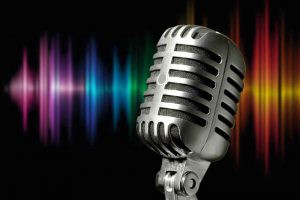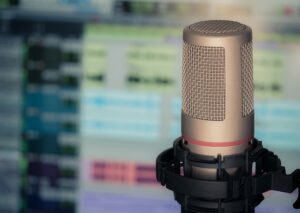Capturing audio with exceptional quality can be accomplished using many different recording software products. But not all will meet your needs.
For example, you may want to get involved at the nuts and bolts level with lots of controls, or you may prefer a simple user interface with less tweaking and more default settings.
Before you look into the ranking below, make sure you know what camp you’re in, how you like to learn and especially what your goals are for your audio recording project.
Then, check out the pros and cons of the 8 market leading recording software tools below to assess which one will best fit your needs.
Disclosure: Although I receive affiliate compensation at no additional cost to you to support this site that compensation in no way influences my recommendations, which are strictly informed by my 10+ years of online business experience consulting for clients large and small. My aim is to always recommend tools that offer the best return for your investment (for more details, read my Affiliate Disclosure).
What is the Best Recording Software?
Without further ado, here are the top 8 recording tools on the market right now:
Best Overall:
1. Avid Pro Tools
Pro tools is a full-featured music production platform that comes in three different versions. It lets you record audio, make loops and edit tracks to create your own song or album.
Pro Tools has been the industry standard for professional studios since it launched more than 25 years ago.
If you are a musician, especially in the studio, then odds are your career depends on it. Pro Tools is a staple of almost every major recording studio worldwide. It has been the leader for many years because of its sound quality and rich feature set.
The Pro Tools interface allows you to record vocals or instruments in virtual tracks along with the ability to mix them together using powerful plug-ins and fantastic effects.
PROS
- It comes with over 100 plug-ins and virtual instruments
- You can record up to 32 simultaneous tracks (depending on your hardware)
- Add effects like reverb, delay, distortion, EQ and compression to individual parts or the whole mix
- Export your finished mix as an MP3 file
- Create your own presets to save time on future projects
CONS
- It’s expensive
- The user interface can be difficult to understand for beginners
- It has a steep learning curve
2. Ableton Live
Best for Ease of Use
Ableton Live is one of the most popular digital audio workstations around. It has a very dedicated community of passionate users. It was created to make music and audio production less complicated.
It’s easy enough for beginners but powerful enough for professionals. Whether you want to use it with other hardware instruments like drum machines or synthesizers or just as an audio workstation, this program has everything that most musicians need.
PROS
- Real-time audio effects processing
- Automation of parameters, mixers and sends/returns
- Synchronization to external devices and software
- Sample-based drum machine and sampler
- Record live audio and MIDI tracks at the same time
CONS
- You need an external sound card and MIDI controller to use it, which can get expensive
- It's not the cheapest option on the market
- The interface could be made more intuitive
3. Apple GarageBand
Best Free Tool
GarageBand is a popular free music creation app for hobby musicians that allows you to play any instrument, sing into the microphone or use loops (provided you own an Apple device that is, since it’s not available anywhere else).
This tool has over 300 pre-recorded sounds and loops, as well as a mixer to mix multiple tracks. It also includes many effects to add things like reverb or chorus to your recordings.
You can record yourself singing with your device’s built in microphone or plug in external microphones for multiple voices and instruments.
PROS
- Garageband is a free app
- Records, edits and mixes your audio tracks
- It includes hundreds of virtual instruments, as well as loops in different genres of music
- It has an intuitive interface that lets you easily add effects like reverb, distortion, delay, EQ, compression and more
CONS
- It only works on Apple products
- It’s more limited than paid products
4. FL Studio
Best Library of Sounds and Loops
FL Studio is a digital audio workstation developed by Image-Line. It's been around since the late 90s and has since grown to be one of the most popular digital audio workstations on the market.
FL Studio comes in two main versions and additional bundles with plugins: Fruity Edition and Producer Edition. The main difference between these two versions is that FL Studio Fruity edition has limited access to clip types.
PROS
- FL Studio comes with a full-featured free trial
- It has an intuitive interface that makes it easy to use for beginners
- Compatible with Windows and MacOS
- It includes over 10GB of sounds and loops from leading sound designers
- It has everything you need to compose, arrange, record and mix professional quality music
CONS
- It’s expensive
- The interface takes some time getting used to
- You have to pay extra for plugins, unless you buy one of the bundles
5. Steinberg Cubase
Best for Recording Large Orchestras
Steinberg Cubase has enjoyed a long history of excellence because it’s one of the most stable and well-rounded digital audio workstations around. It also boasts some features that you won't find in other programs.
For example, Cubase can support up to 384 separate tracks at once (more than any other DAW), making it great for recording bands or orchestras. The program is also extremely easy to use with its simple interface.
From the entry-level Cubase Elements, which includes most of the powerful audio and MIDI features like VST Instruments & Effects or Groove Agent ONE drum loops to the flagship version Cubase Pro, offering more advanced tools like multiple editable track comps or Virtual Studio Technology (VST) 3 plug-in support, you’ll experience the same pristine sound quality.
PROS
- Unlimited tracks (up to 384 recording simultaneously)
- Over 500 built-in effects, instruments, and sounds
- MIDI sequencing for virtual instruments and hardware synthesizers
- Virtual drumming tools to create loops or beats from scratch
- Plug-in hosting and support for VST, AU, DXi, and ReWire formats
CONS
- It's expensive
- It's not the most intuitive software to use
- You’ll need a powerful computer for smooth operation
6. Audacity
Best for Free Audio Recording
Audacity is a free audio recording tool that can be used on any operating system. It allows you to record live music as well as several other uses such as voice overs and podcasts, all with a simple interface.
Although nowhere near as powerful as its paid cousins, it still manages to punch above its weight for many recording needs (especially if money is an object.)
Although it can show its limitations for more complex recording projects, it’s more than adequate for home recording setups and simple audio projects like podcasts.
PROS
- Audacity is free and open source
- It's available for Windows, MacOS, Linux/Unix, and other operating systems
- The program also has many effects that allow you to modify your sounds by adding echo, changing the speed or pitch of a recording and more
- The program features a multitrack timeline interface with multiple audio effects
- Can record at any sample rate up to 192 kHz with 32-bit float quality
CONS
- Lacks many features compared to paid recording software
- It can be hard to find good tutorials for Audacity online
- The interface is not super intuitive and takes some time to get used to
7. PreSonus Studio One
Best for Indie Musicians
PreSonus Studio One is an integrated music production software that comes with over 20 built-in plugins, sample packs and loops. It’s available on MacOS and Windows based PC.
Studio One was designed with the musician in mind. It provides a user-friendly interface that’s simple to learn how to use, but also allows you to dig deep into all of its features if you want to. Whether you’re an advanced or beginner musician, Studio One has something for everyone.
PROS
- Drum Machine with Preset Kits, MIDI Sequencer, and Effects Processor
- Mixer with Compressor/Limiter for Professional Sound Quality
- Unlimited tracks and virtual instruments
- MIDI sequencing
- VST plugin support (over 150 included)
CONS
- The interface is not as intuitive as other systems
- It takes time to learn how to use the software
8. Cockos Reaper
Best for Podcasters
Reaper is an affordable and powerful digital audio workstation for home recording. It enables you to edit your tracks, compose, mix or master soundtracks in minutes with just a few clicks.
While it’s used by many musicians and composers, it’s also one of the most popular audio recording systems among podcasters.
PROS
- Compatible with most DAWs and plug-ins
- Supports VST instruments and effects
- App is very efficient with the use of computer resources
- You can record up to 32 channels at once, mix any combination of hardware inputs and software plug-ins, and even put your favorite VSTs in the mix
- Built-in tools for slicing loops, time stretching, pitch shifting, sound design & synthesis
CONS
- Not as well known as some other recording systems
- Reaper has no built-in MIDI support, so you'll need to buy an external MIDI controller or use your computer's keyboard for input
- It's difficult to find tutorials online for Reaper
How To Choose The Right Recording Software

There are many different types of recording software out there, but not all of them will meet your needs. So before you choose, be very clear what your goals are:
- Are you recording music as a soloist?
- Are you recording multiple performers?
- Are you recording a podcast?
- Are you building a home recording studio?
- Will you be synching your audio with video?
- Will you be producing just demo tracks?
- Will you be mastering audio?
Once you’re clear on what your goals are, then look at the different options in the above ranking and see which is the most suitable for your circumstances and your budget.
What You Need To Know Before Buying Recording Software
There’s no “one size fits all” system that’ll take care of all requirements, so make sure you know what it is you really want to get out of your recording suite. There are lots of features that while essential to some will be overkill to others.
Also, don’t choose a system before you find out if the learning curve fits with your learning style. Some of us are less technically inclined than others and you want to make sure you’re dealing with a user interface that you’ll find naturally intuitive, otherwise you’ll feel constantly frustrated.
Finally, although not always 100% of the case, the more expensive a tool is, the more documentation that’ll likely be available for users, and the more support you’ll likely get from the vendor should you get stuck.
3 Mistakes To Avoid When Using Recording Software
Making a good recording can be quite a complex undertaking. Between the instruments, the physical recording space and the performers, it can become quite difficult to record something that sounds really good the first time around.
Here are three tips will help you avoid some of the most common pitfalls that musicians fall into when they set up a recording session:
1. Set your input levels correctly
When recording a track it's important to set all input levels correctly.
The right setting will ensure that your sound is authentic and you won't have to record over again because the playback is either too soft or too distorted.
2. Don’t record too close to the microphone
Have you ever recorded your voice or acoustic instruments only to realize later that the recording is too bassy? The reason why this happens is because in most cases, musicians will place their microphone too close to the source of sound.
This causes the bass frequencies from your audio source to be amplified more than they should be. To avoid this problem, keep a reasonable distance between your mic and any sound source being recorded.
3. Set your recording software correctly before you lay down tracks
Most recording software products are jam packed with features that need to be pre set up individually as there’s no one group of default settings that’ll work for every situation.
Many sound settings that tend to be overlooked prior to recording have a huge impact during playback if chosen incorrectly.
So, take your time to learn how to set the optimal levels attached to your input channels before you start recording so that you can prevent a brilliant session from going to waste.
What Features Should I Look for in Recording Software?
When looking for recording software, you should consider the following features:
Ease of use: The software should be easy to learn and use and not require a steep (and frustrating!) learning curve.
Quality of recordings: The software should produce broadcast-quality recordings at a minimum. If the quality is mediocre, take a pass even if the recording software is inexpensive.
Now here, you need to remember that even the best software in the world won't be able to fix a bad input, so make sure that you always use a good-quality microphone.
Recording formats: The software should support a wide variety of output formats to make sure you can play your music files on any device.
Price: The software should fit your budget without forcing you to compromise on quality.
If you have a limited budget, then read lots of reviews to find those products that are affordable and yet manage to punch way above their weight in sound quality.
Wrapping Things Up
Buying recording software is a significant investment for most people, and can be daunting to the uninitiated.
So, before you make a decision, make sure to read lots or reviews, consult with other musicians, check what users say in forums and, before you commit your hard earned $$$, take advantage of demos and free trials to kick the tires.







